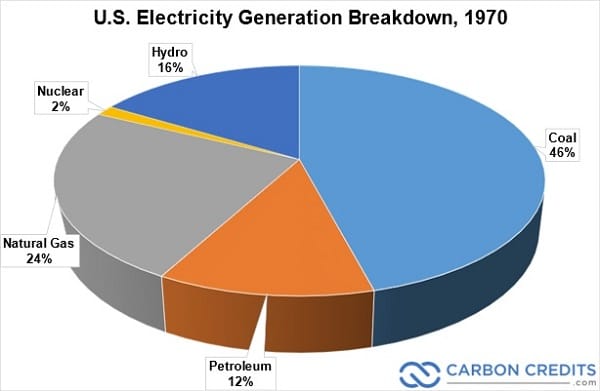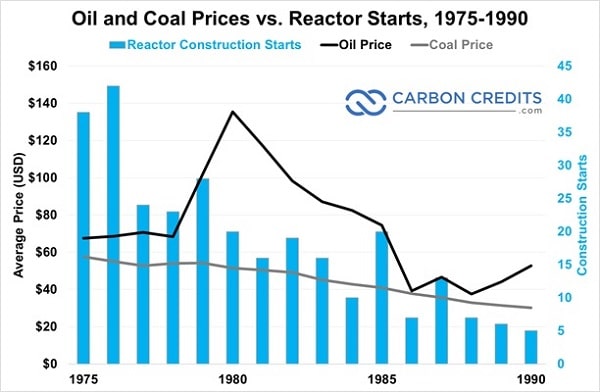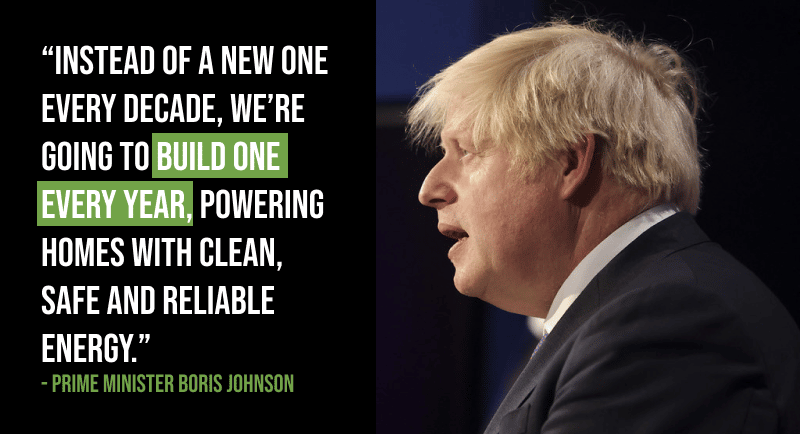 Overnight, the price of both oil and coal increased by 100 percent.The new kid on the block, nuclear, was suddenly far cheaper than gas- and coal-powered electricity and other clean energy sources.
Overnight, the price of both oil and coal increased by 100 percent.The new kid on the block, nuclear, was suddenly far cheaper than gas- and coal-powered electricity and other clean energy sources.
Utilities eagerly placed orders for turnkey nuclear plants.
It seemed to be the answer to all their problems.
And it was, for a while.
When fossil fuel prices were sky-high, nations were rationing oil, and coal was outrageously expensive, the nuclear power buildouts paid off handsomely.
Only the utilities didn’t count on the oil crisis causing electricity demand growth to slow sharply. At the same time they had to increase prices, no one wanted their product.
That’s the same time as when nuclear construction prices started to spiral out of control due to new regulations and ways looking for clean energy. Utilities found themselves stuck between a rock and a very hard place:
- Go bankrupt due to high fuel prices, or
- Go bankrupt due to high nuclear construction costs.
Then the prices of oil and coal started to fall, and fall some more—from 1980 all the way through 1985.
Utilities quickly switched to building fossil fuel plants again.
Not a single new reactor began construction in the United States from 1980–2010.
Instead, coal and natural gas dominated—and CO2 emissions were off the charts and the option for a clean energy like nuclear melts into thin air.
The world built a decades-long addiction to cheap, dirty energy that became nearly impossible to break.
Freaking Fracking
In the mid-2000s, natural gas prices were rising. Popular opinion held that the U.S. was going to severely limit CO2 emissions.
And all those nuclear plants built in the ‘70s suddenly looked appetizing again.
Their operating costs averaged only $0.02/kWh.
An efficient combined-cycle plant was running four to five times as much… just for the fuel.
In that market, nuclear was king.
- Every GW of capacity—about the size of a single reactor—was spinning out up to half a billion every year.
That lasted for four glorious years, from 2004–2008.
Utilities took note.
From 2007–2009, thirteen companies applied to the Nuclear Regulatory Commission for construction and operating licenses to build twenty-six new nuclear reactors.
For context, that’s 25 percent of the U.S. current nuclear reactor base in just two years.
Then it was de ja vu all over again. The Global Financial Crisis reduced the demand for natural gas, causing prices to plummet.
Then in the early 2010s, a new technology called “fracking” made natural gas much cheaper than nuclear. This forced plants offline.
By 2013, most of the new nuclear applications had been abandoned. Natural gas electricity was about 4 cents per kwh, versus 10 cents for nuclear.
In the northeastern United States, electricity prices fell more than 50 percent from 2008–2016.
A study by MIT in 2015 showed that the current price trajectory of electricity made about two-thirds of nuclear power in the U.S. uneconomical—forcing about 20 percent into early retirement.
In 2019, Exelon announced that it would close one of its nuclear reactors in Pennsylvania unless it received subsidies. Why?
Because cheap natural gas sliced regional electricity prices in half. That meant Pennsylvania’s nine nuclear reactors (which power 33 percent of the state) were quickly becoming unprofitable.
Natural Gas Is Out; Nuclear Is In
The subsidy request is not far-fetched.
Wind and solar already received massive federal subsidies, which is part of what makes them competitive with nuclear.
Nuclear is the only form of energy that is not being valued by the market for its low emissions and extreme reliability. Fortunately—despite the best attempts of oil and gas companies at stopping them—politicians in several states are rewriting the rules.
-
“Zero-emission credits” are being created so the market accounts for the value of carbon-free, clean energy like nuclear.
And the federal government created a $6 billion Civil Nuclear Credit Program last year to help preserve the existing nuclear infrastructure in the U.S.
In the end, the subsidies might not even be necessary.
In the last three years, natural gas has spiked 400%—most of that before 2022. It’s at its highest level in thirteen years.
It was at $8 when all those applications were filed, then dropped as low as $2 in 2019.
Now natural gas is back at $8.
Meanwhile, coal has risen from $50 a ton to $400 a ton in just two years.
Energy prices in the EU are already far beyond extremely expensive nuclear plants.
In fact, natural gas increases have pushed prices in the UK to $225 per MWh for the first time in fifteen years. And that’s in the summer, when energy demand is about 50 percent lower than the winter.
That’s about double the price the UK government guaranteed to pay a French company building a reactor in England.
- In other words, they’d get an immediate discount on energy just by building more nuclear reactors.
So that’s exactly what they’re going to do.
In 2000, nuclear power supplied about 10% of the U.K.’s electricity. It was 20% in 2020 and they’re going to take it to 25%.
They’ve set up a new organization called Great British Nuclear. Its purpose is to ensure every new nuclear plant is built faster than the last.
In the future, it won’t matter how cheap other energy is.
Nuclear will be even cheaper than any clean energy.
And best of all, it will be carbon-free.


